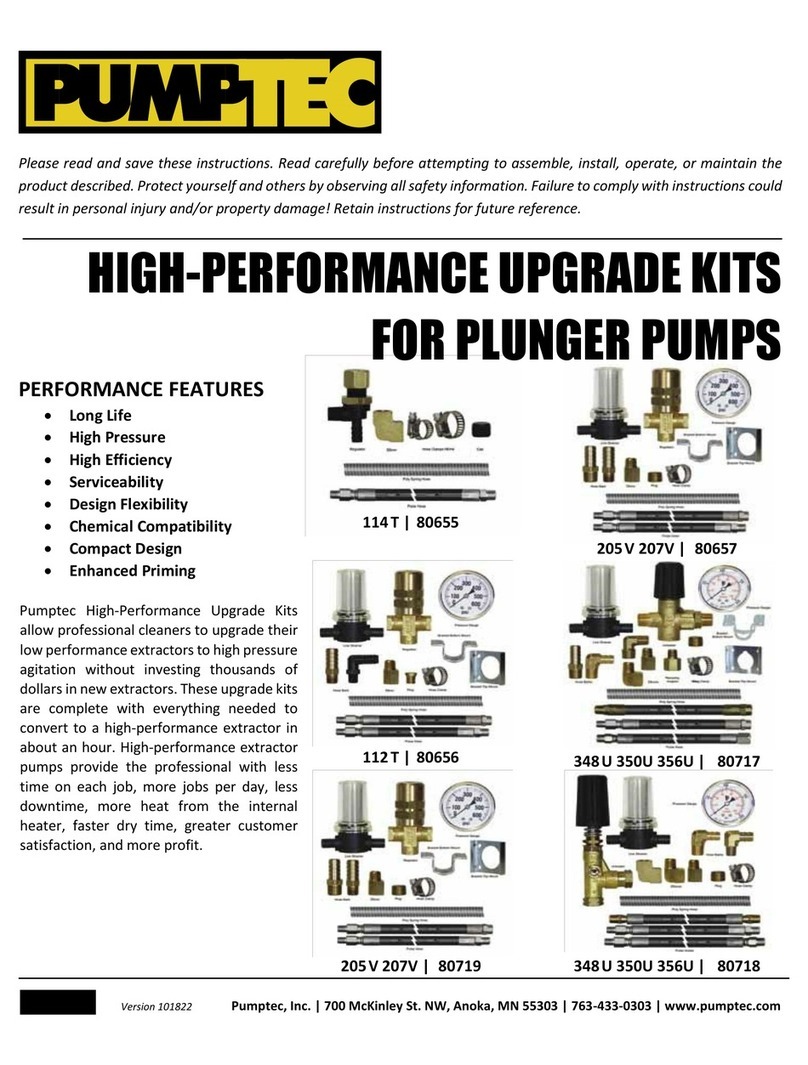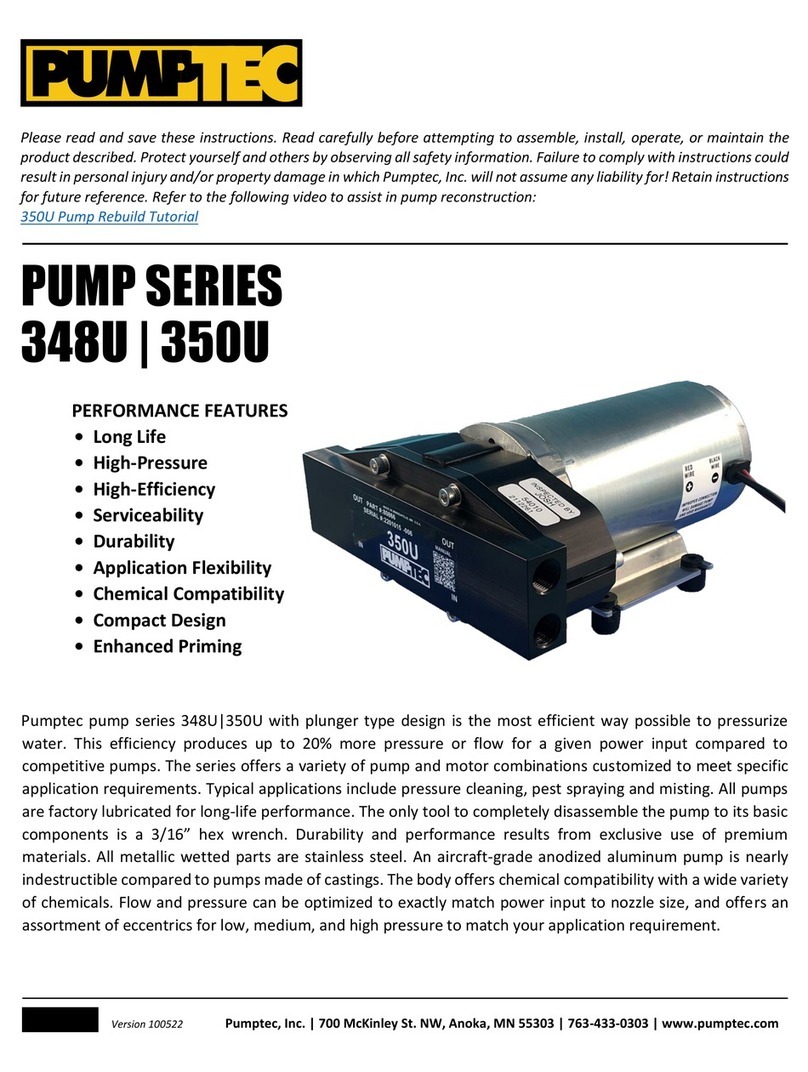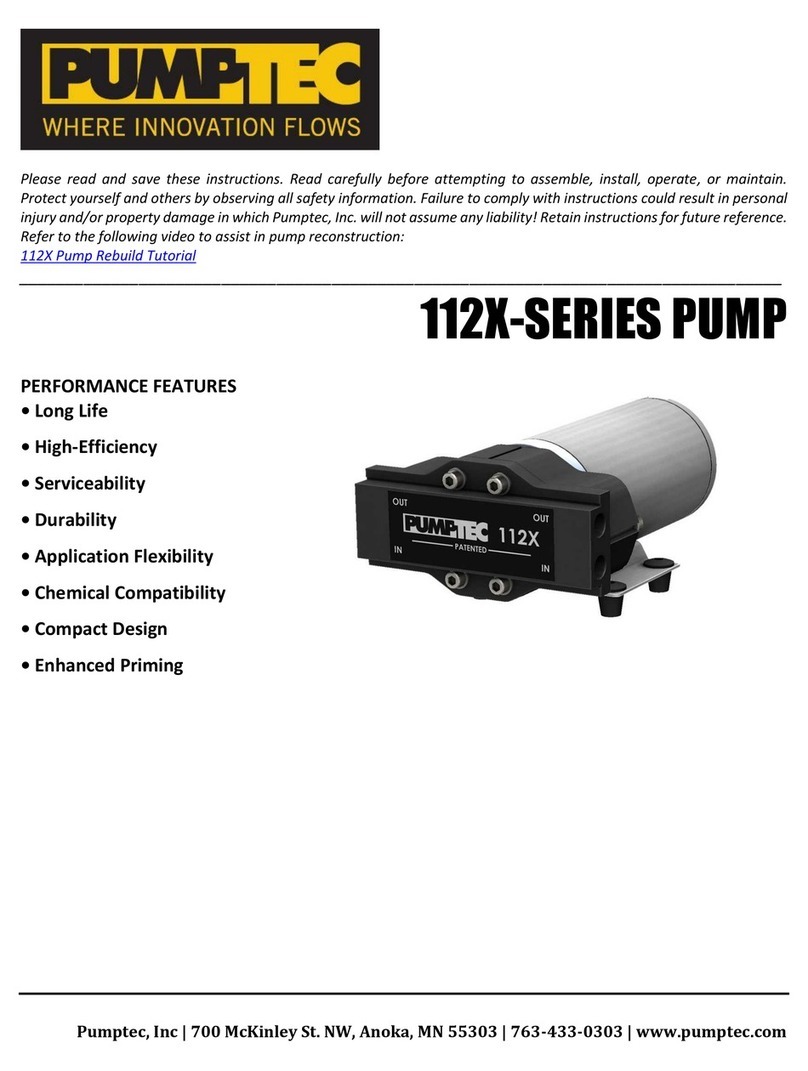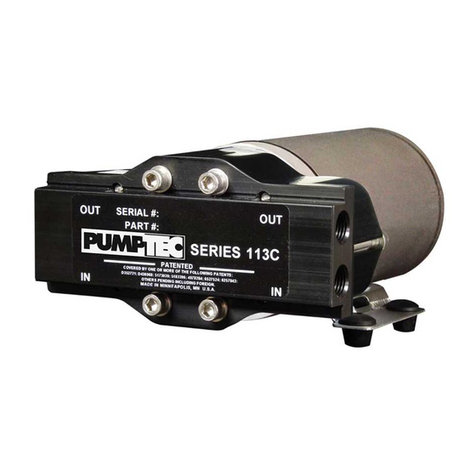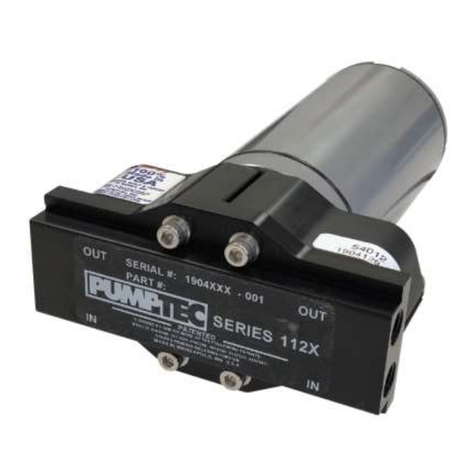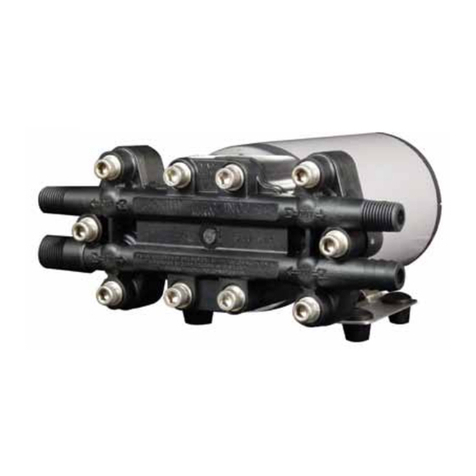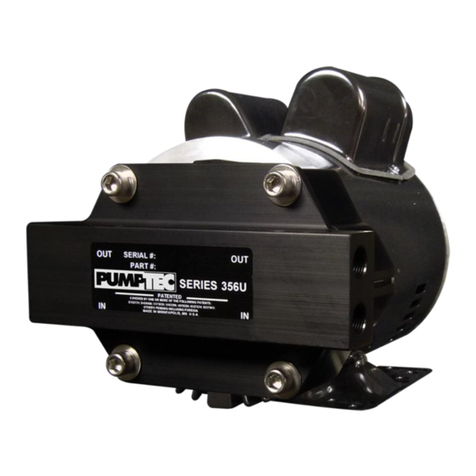INLET PRESSURE should fall within the specifications of the
pump.
• High RPM, high temperatures, low vapor pressures or high
viscosity may increase acceleration loss of liquids.
• Optimum pump performance is obtained with +20 PSI (1.4
BAR) inlet pressure. With adequate inlet plumbing, most
pumps will perform with flooded suction.
• After prolonged storage, pump should be purged of air to
facilitate priming. Disconnect the discharge port to allow
liquid to pass through pump and measure flow.
BYPASS TO INLET –care should be exercised when
deciding the method of bypass from control valves.
• It is recommended that the bypass be directed to a baffled
reservoir tank, with at least one baffle between the bypass
line and the inlet line to the pump.
• Although not recommended, bypass liquid may be returned
to the inlet line of the pump if the system is properly
designed to protect your pump.
• A low-pressure, flexible hose should be used from the
bypass connection to the inlet of the pump.
• Caution should be exercised to avoid under sizing the bypass
hose diameter and length.
• Check the pressure in the bypass line to avoid over-
pressurizing.
USING CHEMICALS
Chemicals can be mixed into the fluid and it is necessary to
understand whether these chemicals will damage the pump or
other system components. Another way to put chemicals into
the fluid is with a downstream injector.
An injector works as a result of the difference of pressure
between the inlet side of injector and discharge side. In most
cases, the pressure on the discharge side cannot exceed 1/2 of
the inlet pressure. For example, 1000 PSI into an injector
should allow up to 500-600 PSI spray pressure on discharge
side. There are dual-function nozzles that permit high
pressure, chemical free rinse and low pressure, chemical
spray. These are convenient for the operator and will not harm
a properly designed system.
The advantages of an injector are:
Fewer items touching chemical, the chemical injection rate can
be controlled, and applying chemical at lower pressure
increases chemical use efficiency.
HEATING FLUID
The pumps may sometimes be used with downstream heaters
and precautions need to be taken to protect the system and
persons from harm. Refer to the skilled staff at the equipment
manufacturer for guidance and proper system care. Please be
aware that heated water expands, and additional pressure
release safety devices may be required.
SYSTEM DESIGN
A pump is the heart of every system and proper selection is
critical to equipment function and durability. If a pumping set
with excess flow is chosen, then energy and fluid is wasted.
Equipment effectiveness can decrease if excess pressure
results, and so can pump life.
TYPICAL APPLICATIONS AND THEIR PERFORMANCE
CONSIDERATIONS
PRESSURE CLEANING The optimal combination of PSI and GPM
for cleaning is a ratio of 1 GPM for every 300-400 PSI. This
combination maintains sufficient droplet size for cleaning force
and distance. If the flow is increased without an increase in
pressure, the cleaning impact does not increase with the
increased use of fluid. If pressure increases, and flow does not,
then the water droplet size reduces and has less impact force,
requiring closer cleaning distances and increased risk of
surface damage
PEST SPRAYING
This application can have specific chemical usage requirements
and application pressure limits, so use the included
information as a guide only. Refer to label requirements for
each specific chemical. Line Loss When choosing a pump for
spraying, pressure loss in the hose must be considered. The
pressure is greatest at pump and decreases over the length of
the hose. Typically, these systems utilize very long hoses, 200-
300 ft. is common, and requires a certain minimum amount of
performance to move the flow through the lengths of hose.
For example, a 3 GPM system will require (lose) 50 PSI per 50
ft. of 3/8” ID hose. A pump with only 60-70 PSI may not
provide the desired performance at the end of the hose. See
reference charts to assist in system design.
MISTING
It is critical to size the pump correctly in a misting application.
If insufficient flow is chosen, then proper atomization and
droplet size will not result. If excessive flow is chosen, then
unnecessary wear and wasted energy will occur in this very
demanding application. Refer to the nozzle Performance Chart
for your chosen nozzles to determine the required total flow at
desired pressure. For example, if 1000 PSI is desired from 20
pieces of ‘08 misting nozzles, then a minimum flow rate of 0.4
GPM is required. Allowances need to be made for losses from
tubing lengths and fittings, too. It would be unwise in this
situation to choose a 0.75 or 1.0 GPM pumping system.
Another consideration for misting concerns the routing of the
bypass fluid. DO NOT return bypass fluid from regulating valve
directly back to inlet of pump. The returned fluid will contain
large amounts of air bubbles that will cause cavitation and
damage in the pump head. Also, the small amount of returned
